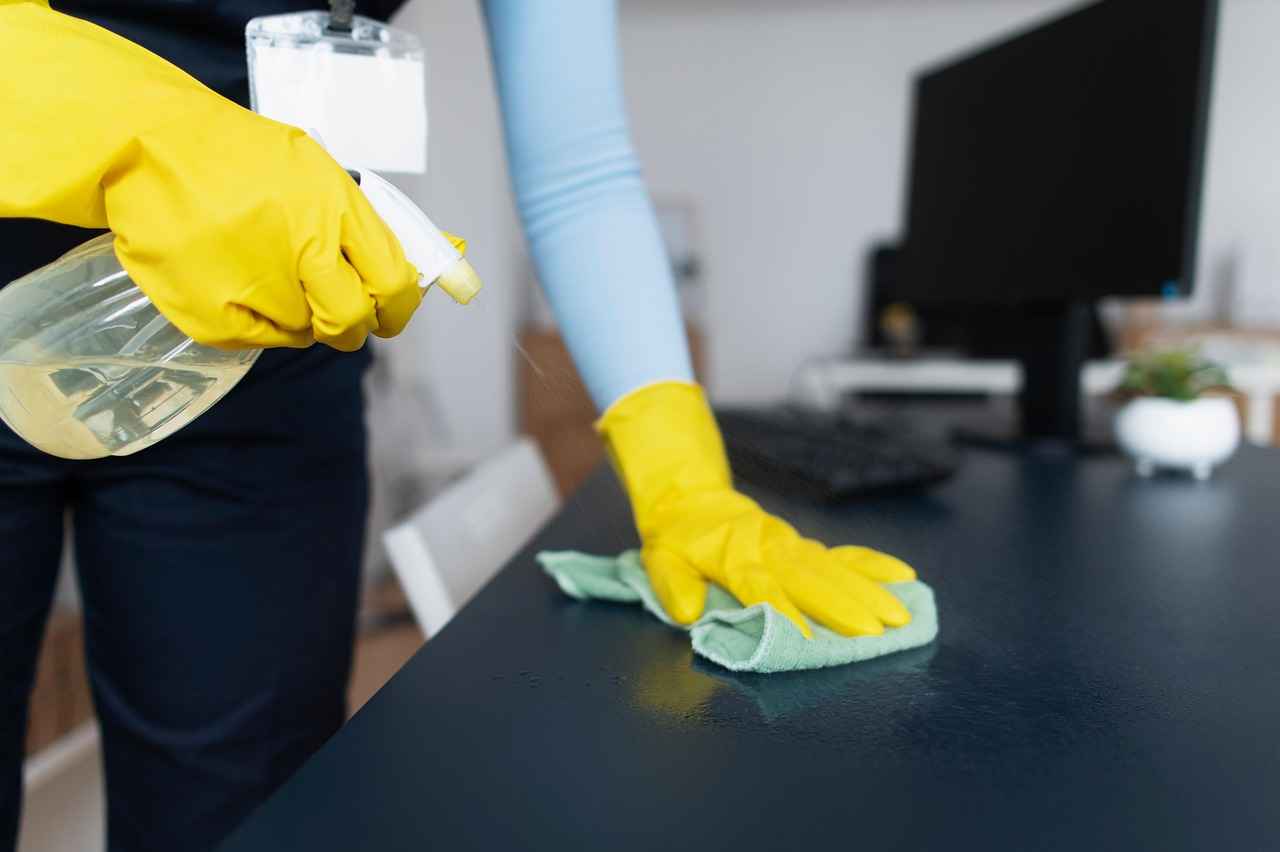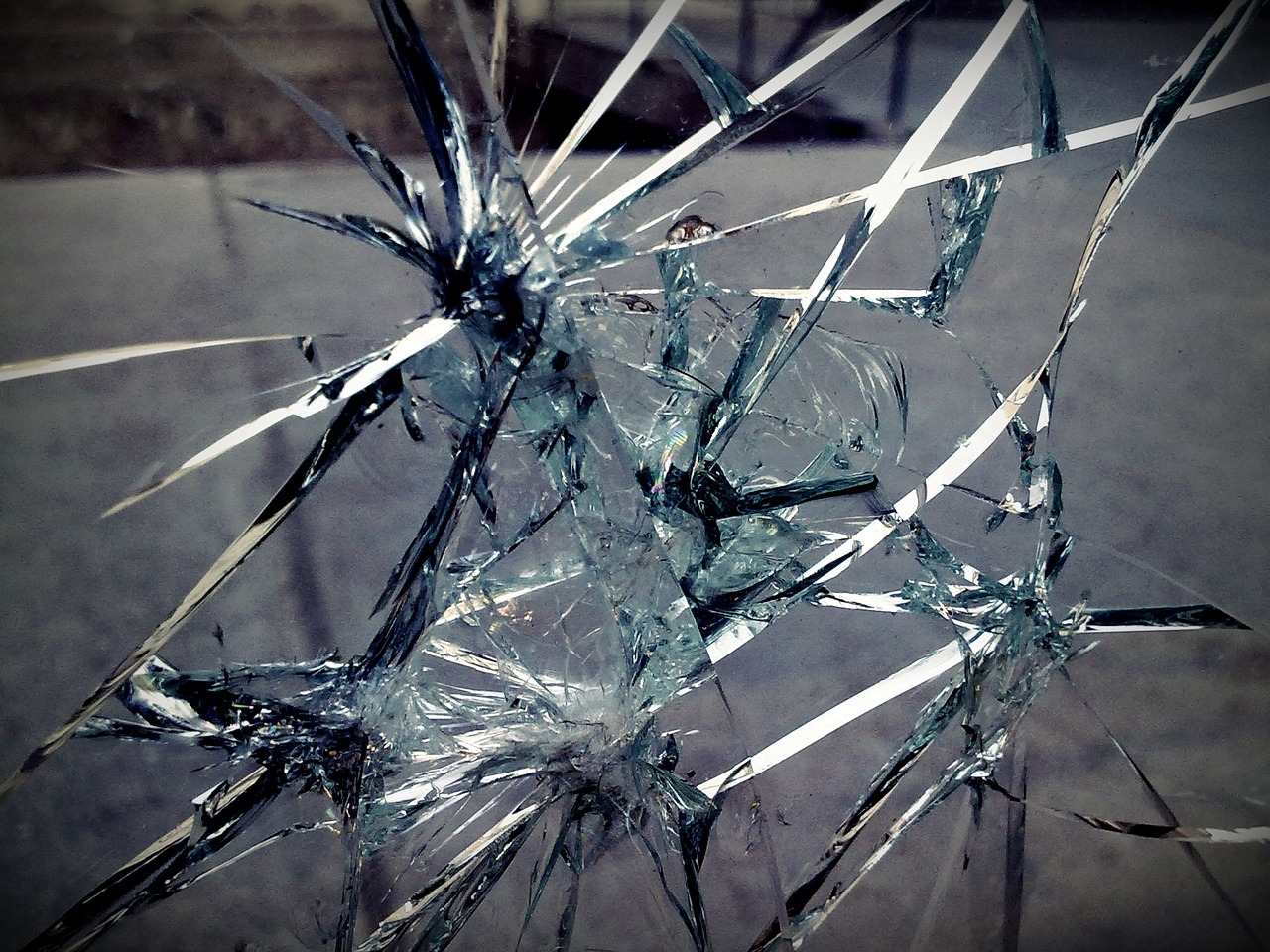Discover practical and effective methods to remove water stains from leather items. This guide provides insights into cleaning techniques, preventative measures, and product recommendations to restore your leather’s original beauty.
Understanding the origin of water stains on leather is crucial for effective cleaning. Water stains can arise from spills, humidity, or improper storage, leading to discoloration and texture changes. When water seeps into the leather, it can disrupt the natural oils, resulting in a dull appearance.
Preparing leather before cleaning is essential to avoid damage. Follow these steps to ensure a successful cleaning process:
- Gathering the Right Tools: Essential tools include soft cloths, gentle leather cleaners, and conditioners. These help maintain the material’s integrity.
- Testing Cleaning Products: Before applying any cleaning product, testing is vital. Apply a small amount of the cleaner on an inconspicuous area to check for any adverse reactions.
Different methods can effectively remove water stains from leather. Here are some popular techniques:
Many effective home remedies can help remove water stains from leather. Common ingredients like vinegar and olive oil can be used to treat minor stains. Mix equal parts of vinegar and water, then gently dab the solution onto the stain with a soft cloth. Allow it to dry naturally.
For tougher stains, commercial leather cleaners may be necessary. Popular products often contain natural oils and conditioners. Always follow the manufacturer’s instructions for safe application. Look for products specifically designed for leather to avoid further damage.
Preventing water stains on leather is easier than dealing with them after they occur. Consider these protective measures:
Applying leather protectants can create a barrier against moisture. Choose high-quality protectants that are safe for your specific leather type. Apply the product evenly and allow it to dry completely before using the item.
Storing leather items correctly can help prevent water damage. Keep them in a cool, dry place and use breathable covers to avoid moisture buildup. Avoid plastic bags that can trap humidity.
Sometimes, water stains may be too severe for DIY methods. Recognizing when to consult a professional leather cleaner is essential. If the leather shows cracks or deep discoloration, professional intervention may be necessary to restore its appearance.
Look for signs of severe damage such as extensive discoloration or texture changes. If the leather feels brittle or shows cracks, it’s time to seek professional help.
Selecting the right professional cleaner can ensure your leather is treated properly. Look for reputable services with positive reviews and ask about their cleaning methods to ensure they align with your needs.
By following these guidelines, you can effectively remove water stains and maintain the beauty of your leather items for years to come.

What Causes Water Stains on Leather?
Understanding the origin of water stains on leather is crucial for effective cleaning. Water stains can arise from various sources, including spills, humidity, and improper storage. Each of these factors can lead to discoloration and changes in texture, making it essential to identify the cause before attempting any cleaning methods.
Water stains often occur when liquid comes into contact with leather, leaving behind marks that can be unsightly. For example, a simple spill from a drink can create a noticeable ring on a leather surface. Similarly, high humidity levels can introduce moisture that seeps into the leather, resulting in uneven coloring and stiffness. Improper storage, such as placing leather items in damp areas or covering them with non-breathable materials, can exacerbate these issues.
Additionally, the type of leather plays a significant role in how water stains manifest. Suede and nubuck leathers are particularly vulnerable to water damage due to their porous nature, which allows moisture to penetrate deeply. In contrast, smoother leathers may resist staining but can still suffer from water exposure if not treated properly.
To effectively tackle water stains, it’s essential to understand how they affect the leather’s surface. Water can cause the natural oils in leather to break down, leading to dryness and cracking over time. This deterioration can make the leather appear dull and lifeless. Therefore, prompt action is required when dealing with water stains to prevent long-term damage.
In addition to stains caused by spills and humidity, water marks can also result from improper cleaning methods. Using excessive water or harsh chemicals can strip the leather of its protective layer, making it more susceptible to future staining. Therefore, it is critical to follow appropriate cleaning techniques and use products specifically designed for leather care.
Recognizing the signs of water damage early can help mitigate further issues. If you notice discoloration or changes in texture, it may be time to implement cleaning strategies or seek professional assistance. By understanding the origins of water stains, you can take proactive steps to protect your leather items and maintain their beauty.
In summary, water stains on leather can arise from various sources, including spills, humidity, and improper storage. Understanding these origins is vital for effective cleaning and prevention. By being aware of the factors contributing to water stains, you can take the necessary precautions to keep your leather looking its best.
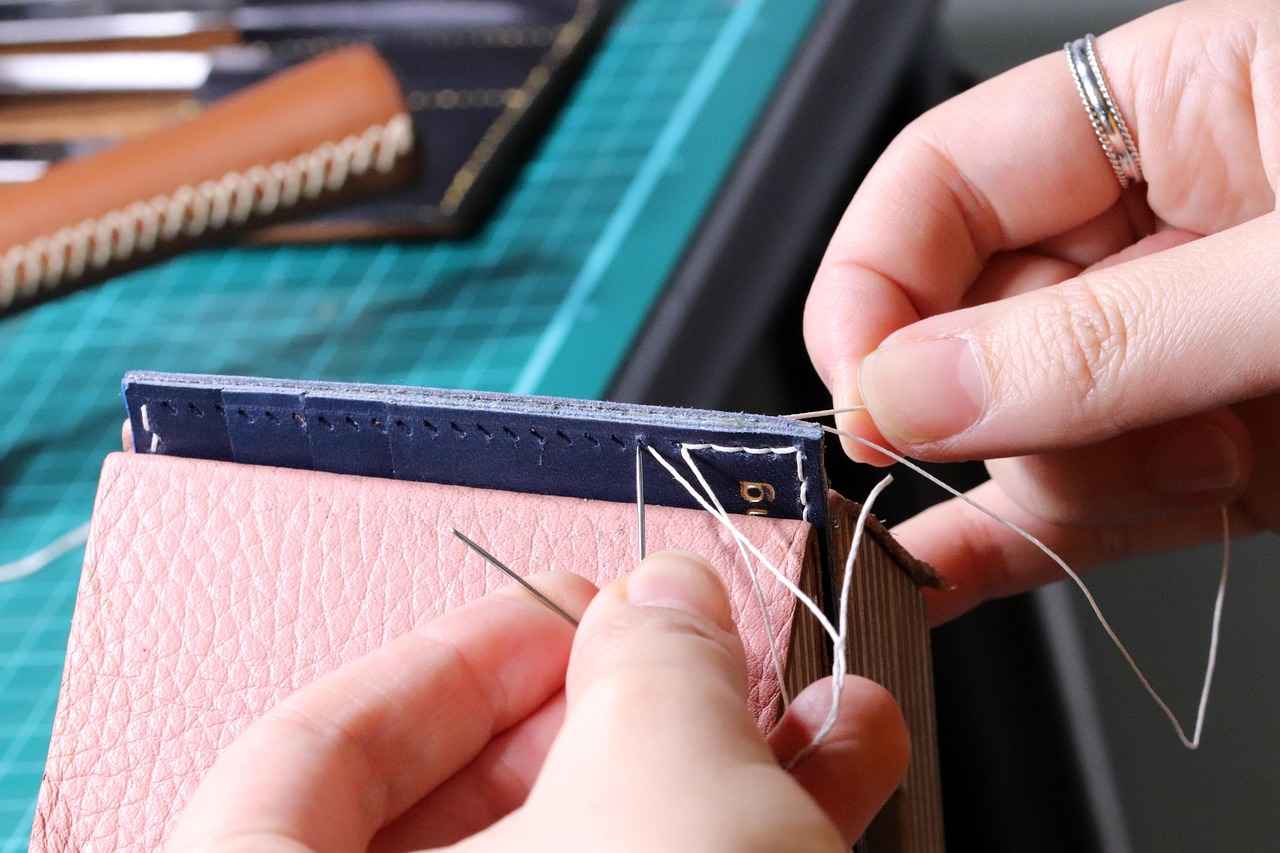
How to Prepare Leather for Cleaning?
Preparing leather for cleaning is an essential step that can significantly impact the success of the cleaning process. Proper preparation helps to avoid potential damage and ensures that the leather remains in good condition. Below are the necessary steps to follow when preparing leather for cleaning.
Before diving into the cleaning process, it is crucial to understand why preparation is important. Leather is a natural material that can be sensitive to various cleaning products and methods. If not prepared correctly, you risk damaging the leather, leading to discoloration, cracking, or even irreversible harm.
Having the right tools at your disposal can make a significant difference in the cleaning process. Here are some essential items you should gather:
- Soft Cloths: Use microfiber or cotton cloths to avoid scratching the leather surface.
- Leather Cleaner: Choose a cleaner specifically designed for leather to ensure safety and effectiveness.
- Leather Conditioner: This will help restore moisture and flexibility after cleaning.
- Brush: A soft-bristled brush can help remove dirt and debris from textured leather.
Before applying any cleaning product, it is vital to test it on a small, inconspicuous area of the leather. This step is crucial to check for any adverse reactions such as discoloration or damage. Follow these steps:
- Apply a small amount of the cleaner to a hidden section of the leather.
- Wait for a few minutes to observe any changes.
- If no negative reactions occur, proceed with cleaning the entire item.
Before applying any cleaner, it is important to remove surface dust and debris. Use a soft cloth or brush to gently wipe the leather, ensuring that you do not rub too hard, which could lead to scratches. This step prepares the leather for a more effective cleaning process.
Take a moment to assess the overall condition of the leather. Look for any signs of damage, such as cracks or areas of wear. Understanding the condition will help you choose the right cleaning method and products. If the leather appears severely damaged, consider consulting a professional cleaner.
Once you have gathered your tools and assessed the leather, it’s time for the final preparations:
- Ensure a Well-Lit Area: Good lighting will help you see any stains or areas that need extra attention.
- Protect Surrounding Areas: Lay down towels or covers to protect surfaces from any potential drips or spills during the cleaning process.
- Read Product Instructions: Familiarize yourself with the cleaning products you will be using to ensure proper application.
By following these steps, you can effectively prepare leather for cleaning, minimizing the risk of damage and ensuring a successful cleaning process. Remember, taking the time to prepare properly will help maintain the beauty and longevity of your leather items.
Gathering the Right Tools
When it comes to maintaining the beauty and longevity of leather items, is absolutely essential. Proper cleaning and care can significantly enhance the appearance and durability of leather, making it crucial to equip yourself with the necessary supplies.
Using the correct tools ensures that you do not inadvertently damage the leather during the cleaning process. Each tool serves a specific purpose, and understanding these can lead to better results.
- Soft Cloths: Always opt for soft, lint-free cloths to avoid scratching the leather’s surface. Microfiber cloths are particularly effective as they are gentle yet absorbent.
- Leather Cleaners: Choose a cleaner specifically formulated for leather. These products help to remove dirt and stains without stripping the material of its natural oils.
- Leather Conditioners: Conditioning is vital for keeping leather supple and preventing it from drying out. A good conditioner replenishes the oils and maintains the leather’s integrity.
- Brushes: A soft-bristled brush can be used to remove dust and debris from textured leather surfaces, ensuring a thorough clean.
- Water Repellent Sprays: These sprays create a protective barrier against moisture, which is essential for preventing water stains.
Using these tools correctly is just as important as having them. Here are some tips:
1. Start by dusting off the leather item with a soft cloth or brush.2. Apply a small amount of leather cleaner to a clean cloth and gently rub it into the leather in circular motions.3. After cleaning, allow the leather to dry naturally, away from direct sunlight.4. Once dry, apply a leather conditioner to maintain suppleness and prevent cracking.5. For added protection, spray a leather water repellent evenly across the surface.
Before fully committing to any cleaning product or tool, it is wise to test it on an inconspicuous area of the leather. This ensures that there are no adverse reactions or damage. Always follow the manufacturer’s instructions for best results.
Quality leather care tools can be found in various places:
- Specialty Leather Stores: These stores often carry high-quality products specifically designed for leather care.
- Online Retailers: Websites like Amazon or dedicated leather care sites provide a wide range of options and reviews.
- Department Stores: Many department stores have a section for leather goods that includes cleaning supplies.
By investing in the right tools and using them effectively, you can significantly improve the appearance and lifespan of your leather items. Regular maintenance not only keeps your leather looking great but also protects your investment in the long run.
Testing Cleaning Products
When it comes to cleaning leather, ensuring the safety and integrity of the material is paramount. Before diving into the cleaning process, one of the most crucial steps is . This practice not only protects your leather but also helps to achieve the best possible results without causing any damage.
Leather is a delicate material, and different types can react differently to various cleaning agents. Testing a cleaning product before applying it to a larger area helps identify any potential adverse reactions. This precaution can save you from irreversible damage, such as discoloration or texture alterations.
- Choose an Inconspicuous Area: Select a small, hidden spot on the leather item. This could be the underside of a flap, the back of a cushion, or any area that is not easily visible.
- Apply a Small Amount: Using a soft cloth, apply a tiny amount of the cleaning product to the selected area. Ensure that you do not saturate the leather.
- Wait and Observe: Allow the product to sit for a few minutes. Check for any changes in color, texture, or shine. If the leather appears unaffected after a short time, it may be safe to proceed.
- Wipe and Dry: After testing, wipe the area with a clean, dry cloth to remove any residue. This will help you see the true effect of the cleaner.
If you observe any negative reactions, such as discoloration or a sticky residue, it is essential to stop using the product immediately. Consider alternative cleaning solutions that are specifically designed for leather. Always read product labels to ensure compatibility with leather materials.
When selecting cleaning products for testing, consider using those that are specifically formulated for leather care. Here are a few options:
- Leather Cleaner: Look for pH-balanced cleaners that are gentle yet effective.
- Conditioners: These help maintain the leather’s suppleness and can also be tested.
- Homemade Solutions: A mixture of vinegar and water can be a safe alternative for some stains, but always test first.
1. Always read the instructions on the product label.2. Test in a well-lit area to accurately assess any changes.3. Keep a record of which products work well and which do not.4. If unsure, consult a professional before attempting to clean valuable leather items.
By following these guidelines for testing cleaning products, you can ensure that your leather items remain in excellent condition. Remember, a little precaution goes a long way in preserving the beauty and longevity of your leather goods.
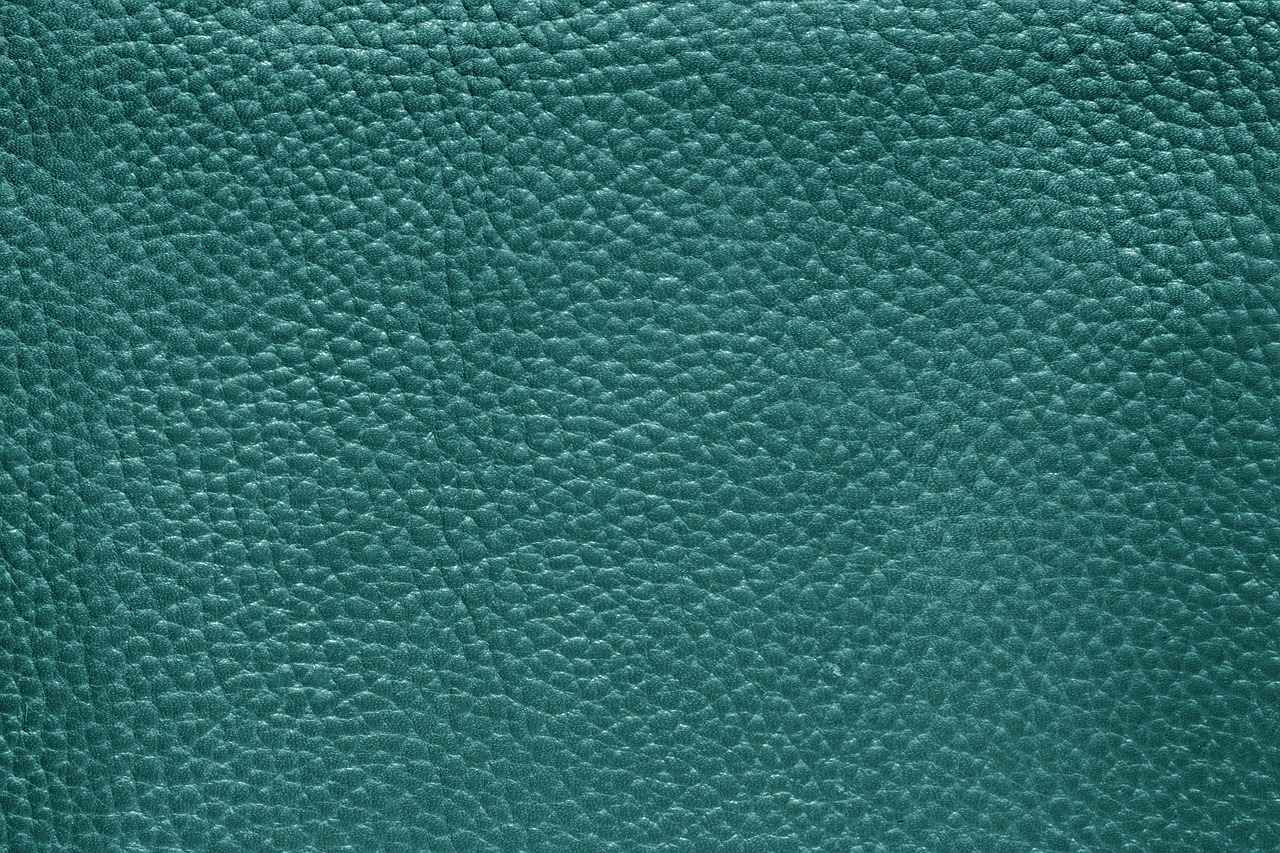
What Are the Best Methods for Removing Water Stains?
Water stains on leather can be a frustrating sight, especially when they mar the beauty of your favorite leather items. Fortunately, there are various effective methods to tackle these stains, whether you prefer home remedies or commercial products. This section will guide you through the best techniques for removing water stains from leather, ensuring you can restore its original charm.
When it comes to removing water stains, it’s essential to choose a method that suits the type of leather and the severity of the stain. Below are some of the most effective techniques:
- Vinegar Solution: Mix equal parts of white vinegar and water in a spray bottle. Lightly mist the stained area and gently blot with a soft cloth. The acidity in vinegar can help lift the stain without damaging the leather.
- Olive Oil Treatment: For minor stains, applying a small amount of olive oil can work wonders. Use a soft cloth to rub the oil into the stain in a circular motion. This not only helps to remove the stain but also conditions the leather.
- Baby Wipes: Surprisingly, baby wipes can be effective for quick clean-ups. They are gentle enough for leather and can help remove light water stains without causing damage.
For more stubborn stains, commercial leather cleaners may be necessary. Here are some popular options:
| Product | Key Ingredients | Usage Instructions |
|---|---|---|
| Leather Honey | Natural oils | Apply with a soft cloth, buff until dry. |
| Lexol Leather Cleaner | Surfactants | Spray on, wipe with a damp cloth, then dry. |
| Meguiar’s Gold Class | Conditioning agents | Apply evenly, let sit, then wipe off excess. |
Always follow the manufacturer’s instructions when using these products. It’s advisable to test any cleaner on a hidden area of the leather first to ensure it doesn’t cause discoloration.
If home remedies and commercial products fail to remove the stain, consider seeking help from a professional leather cleaner. Professionals use specialized techniques and products that can effectively restore leather without risking damage. Look for cleaners with good reviews and experience in handling leather materials.
To maximize your chances of successfully removing water stains from leather, keep these tips in mind:
- Act Quickly: The sooner you address a water stain, the easier it will be to remove.
- Use Soft Cloths: Always use soft, lint-free cloths to avoid scratching the leather.
- Test First: Always test any cleaning method on a small, inconspicuous area before applying it to the stain.
By using these methods, you can effectively tackle water stains on leather and keep your items looking their best. Remember, regular maintenance and prompt action are key to preserving the beauty of your leather goods.
Home Remedies for Water Stains
When it comes to maintaining the beauty of leather items, water stains can pose a significant challenge. Fortunately, there are many effective home remedies that can help restore your leather’s original appearance. Utilizing common household ingredients, you can tackle minor water stains with care and precision.
Before diving into the remedies, it’s essential to understand that leather is a natural material, and using the right approach is crucial to avoid further damage. Here are some effective home remedies:
Vinegar is a versatile cleaning agent that can effectively remove water stains from leather. To use this remedy:
- Mix equal parts of white vinegar and water in a bowl.
- Soak a soft cloth in the solution and wring it out to avoid excess moisture.
- Gently rub the stained area in a circular motion.
- Wipe off any residue with a clean, dry cloth.
Always test on an inconspicuous area first to ensure it won’t discolor the leather.
Olive oil not only conditions leather but can also help in removing water stains. Follow these steps:
- Apply a small amount of olive oil to a soft cloth.
- Gently buff the stained area, allowing the oil to penetrate the leather.
- Let it sit for about 30 minutes, then wipe off any excess with a clean cloth.
This method not only helps remove stains but also nourishes the leather.
Cornstarch can absorb moisture and is effective against water stains. To create a paste:
- Mix cornstarch with a small amount of water until it forms a thick paste.
- Apply the paste to the stained area and let it dry completely.
- Once dry, gently brush off the cornstarch with a soft cloth.
This method is particularly useful for stubborn stains that require a bit more effort.
Baking soda is another excellent home remedy for water stains. Here’s how to use it:
- Mix two tablespoons of baking soda with a few drops of water to form a paste.
- Apply the paste to the stained area and let it sit for a few hours.
- Wipe it off with a damp cloth and then dry the leather with a soft, dry cloth.
This method is effective in lifting stains without harsh chemicals.
In some cases, using a hair dryer can help eliminate water stains. Here’s how:
- Set the hair dryer on the lowest heat setting.
- Hold it about 6 inches away from the stained area.
- Move it back and forth to avoid overheating any one spot.
This technique helps evaporate the moisture trapped in the leather, reducing the visibility of stains.
After treating water stains, it’s vital to condition the leather to restore its natural oils. Regular maintenance, including cleaning and conditioning, can prevent future stains and keep your leather items looking their best.
Remember, while these home remedies can be effective, always proceed with caution and consider seeking professional help for severe cases.
Commercial Leather Cleaners
are essential tools for maintaining the beauty and longevity of your leather items, especially when faced with tough stains. While DIY methods can be effective for minor issues, certain stains require the potency of commercial products. This section delves into popular commercial leather cleaners, their ingredients, and safe usage practices to ensure your leather remains in top condition.
When it comes to tough stains, commercial leather cleaners are formulated with specific ingredients designed to break down grime and restore leather’s natural luster. These products are particularly beneficial for:
- Deep Cleaning: They penetrate the leather fibers to remove embedded dirt.
- Conditioning: Many cleaners also condition the leather, preventing it from drying out.
- Protection: Some products offer a protective layer against future stains.
Here are a few well-known commercial leather cleaners that have garnered positive reviews:
| Product Name | Main Ingredients | Best For |
|---|---|---|
| Lexol Leather Cleaner | Surfactants, Water | General cleaning |
| Leather Honey | Natural oils, Beeswax | Conditioning and cleaning |
| Meguiar’s Gold Class Leather Cleaner | Foaming agents, Conditioners | Removing tough stains |
To ensure the safety and effectiveness of commercial leather cleaners, follow these steps:
- Read the Label: Always check the manufacturer’s instructions and warnings.
- Test First: Apply a small amount of the cleaner on an inconspicuous area to ensure it does not cause discoloration.
- Use Soft Cloths: Employ a soft, lint-free cloth to avoid scratching the leather surface.
- Apply Evenly: Use a small amount of cleaner and apply it evenly, avoiding over-saturation.
- Condition After Cleaning: Follow up with a leather conditioner to maintain suppleness.
While commercial leather cleaners can be beneficial, there are certain practices to avoid:
- Harsh Chemicals: Avoid cleaners containing alcohol, ammonia, or other harsh solvents that can damage leather.
- Excessive Water: Do not soak the leather; excess moisture can lead to mold and mildew.
- Neglecting Conditioning: Failing to condition leather after cleaning can lead to dryness and cracking.
By choosing the right commercial leather cleaner and using it correctly, you can effectively tackle tough stains while preserving the integrity of your leather items. Always remember that a little care goes a long way in maintaining the elegance and durability of your leather goods.
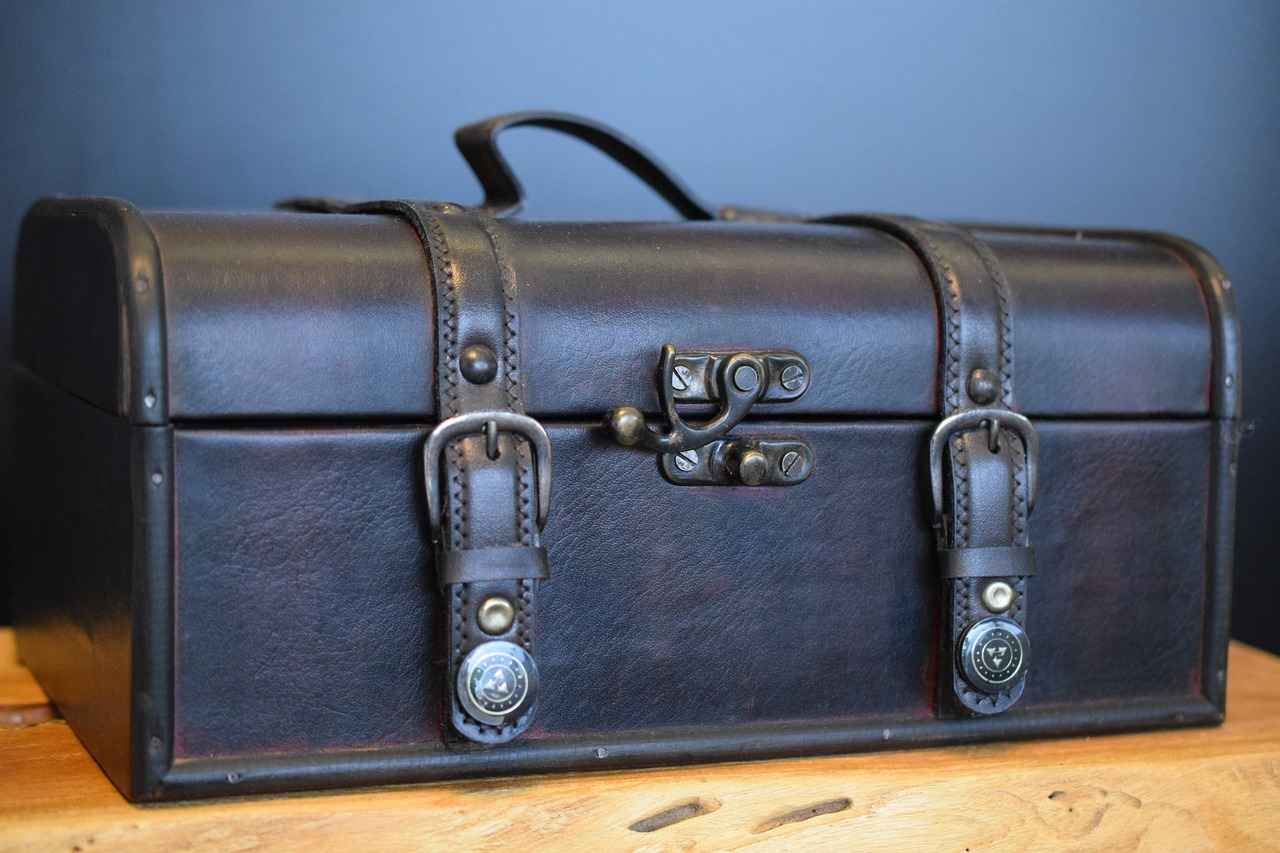
How to Prevent Future Water Stains on Leather?
When it comes to preserving the beauty and longevity of leather items, preventing water stains is far more effective than attempting to remove them after they have set in. Water stains can cause permanent damage to leather, leading to unsightly discoloration and texture changes. In this section, we will explore essential protective measures, optimal storage techniques, and maintenance practices that can help keep your leather in pristine condition.
To safeguard leather from the damaging effects of moisture, it is crucial to implement a few protective measures:
- Leather Protectants: Utilizing a high-quality leather protectant can create an invisible barrier against moisture. Look for products that are specifically designed for your type of leather, and follow the manufacturer’s instructions for application.
- Regular Conditioning: Conditioning your leather regularly not only enhances its appearance but also helps to maintain its natural oils. This can make the leather less susceptible to absorbing water. Choose a conditioner that is appropriate for your leather type.
Proper storage is key to preventing water stains on leather. Here are some tips:
- Cool and Dry Environment: Store your leather items in a cool, dry place. Avoid areas with high humidity, such as basements or attics, where moisture can accumulate.
- Breathable Covers: When storing leather, use breathable fabric covers instead of plastic. Plastic can trap moisture and lead to mold growth, which can damage the leather.
- Avoid Direct Sunlight: Prolonged exposure to sunlight can fade and dry out leather, making it more vulnerable to water damage. Store items away from direct sunlight.
Regular maintenance can significantly reduce the risk of water stains:
- Immediate Cleanup: If any spills occur, clean them up immediately with a soft, dry cloth. Avoid rubbing, as this can spread the moisture.
- Regular Inspections: Periodically check your leather items for any signs of wear or damage. Early detection can prevent minor issues from becoming major problems.
- Use of Dehumidifiers: If you live in a particularly humid climate, consider using a dehumidifier in your storage area to keep the moisture levels in check.
To further enhance the resilience of your leather items against water stains, consider the following:
- Rotate Usage: If you have multiple leather items, rotate their usage. This prevents any one item from becoming overly worn or damaged.
- Professional Treatments: Occasionally, consider having your leather professionally treated. Expert cleaners can apply protective coatings that are not available in retail products.
By implementing these protective measures, proper storage techniques, and maintenance practices, you can significantly reduce the risk of water stains and ensure that your leather remains in beautiful condition for years to come. Remember, prevention is always better than cure, especially when it comes to luxury materials like leather.
Using Leather Protectants
When it comes to caring for leather, one of the most effective ways to ensure its longevity is through the use of leather protectants. These specialized products create a barrier that helps shield your leather items from moisture, dirt, and stains. In this section, we will explore how to choose the right leather protectant and the best practices for applying it to maximize its effectiveness.
Leather protectants are formulated to repel water and other liquids, preventing them from penetrating the leather’s surface. This is crucial because once moisture seeps into the leather, it can lead to water stains, mold, and deterioration of the material over time. By applying a protectant, you not only enhance the appearance of your leather but also significantly prolong its life.
When selecting a leather protectant, consider the following factors:
- Type of Leather: Different types of leather (e.g., suede, nubuck, smooth) require specific protectants. Always check the label for compatibility.
- Water Resistance: Look for products that specifically state they provide waterproofing capabilities.
- Application Method: Some protectants come in spray form, while others are creams or wipes. Choose one that suits your preference and ease of use.
Applying leather protectants is a straightforward process, but following the right steps is essential for optimal results:
- Clean the Leather: Before applying any protectant, ensure the leather is clean and dry. Use a soft cloth and a gentle leather cleaner to remove any dirt or residue.
- Test the Product: Always perform a patch test on an inconspicuous area to check for any adverse reactions or discoloration.
- Apply Evenly: Use a soft cloth or sponge to apply the protectant evenly across the surface. For spray protectants, hold the can at a distance and mist lightly over the leather.
- Allow to Dry: After application, let the protectant dry completely before using or storing the leather item. This usually takes a few hours.
To maintain the protective barrier, it’s recommended to reapply leather protectants every 6 to 12 months, depending on usage and exposure to elements. Regular application helps keep the leather looking its best and reduces the risk of damage.
In addition to using leather protectants, here are some additional tips to keep your leather items in top condition:
- Avoid Excessive Moisture: Try to keep leather items away from extreme humidity and moisture.
- Store Properly: Use breathable covers and store leather in a cool, dry place to prevent moisture buildup.
- Regular Maintenance: Clean and condition your leather regularly to keep it supple and prevent cracking.
By incorporating leather protectants into your routine, you can significantly enhance the durability and appearance of your leather goods. With the right products and proper application techniques, you can ensure that your leather remains protected against moisture and retains its beauty for years to come.
Proper Storage Techniques
Proper storage of leather items is essential for maintaining their quality and longevity. Leather is a natural material that requires specific conditions to prevent damage, especially from moisture. In this section, we will explore the best practices for storing leather items to ensure they remain in excellent condition.
Understanding the significance of proper storage can help you keep your leather items looking their best. Improper storage can lead to various issues, such as:
- Water Damage: Leather is porous, meaning it can absorb moisture, leading to stains and mildew.
- Discoloration: Exposure to sunlight or heat can cause leather to fade or change color.
- Cracking: Dry conditions can cause leather to lose its natural oils, resulting in cracks and stiffness.
Choosing the right location for your leather items is crucial. Here are some tips:
- Cool, Dry Environment: Store leather in a room with stable temperatures and low humidity. Ideal conditions are around 60-70°F (15-21°C) with a humidity level of 40-50%.
- Avoid Direct Sunlight: Keep leather items away from windows and direct sunlight to prevent fading and drying out.
- Ventilated Areas: Ensure the storage area is well-ventilated to prevent moisture buildup, which can lead to mold and mildew.
Once you have identified the right location, consider the following methods to store your leather items:
- Use Breathable Covers: When storing leather bags or jackets, use breathable dust bags or cotton covers. Avoid plastic covers, as they can trap moisture.
- Maintain Shape: For bags and shoes, consider using stuffing or shoe trees to help maintain their shape and prevent creasing.
- Keep Away from Heat Sources: Avoid placing leather items near heaters, radiators, or fireplaces, as excessive heat can dry out the leather and cause damage.
In addition to proper storage, regular maintenance can significantly extend the life of your leather items:
- Regular Cleaning: Clean your leather items regularly with a soft, damp cloth to remove dirt and grime.
- Conditioning: Use a leather conditioner every few months to keep the leather supple and hydrated.
- Inspect Regularly: Check your leather items periodically for any signs of damage or wear and address them promptly.
By following these proper storage techniques, you can significantly reduce the risk of water damage and other issues associated with leather items. Remember, prevention is key to maintaining the beauty and functionality of your leather goods.
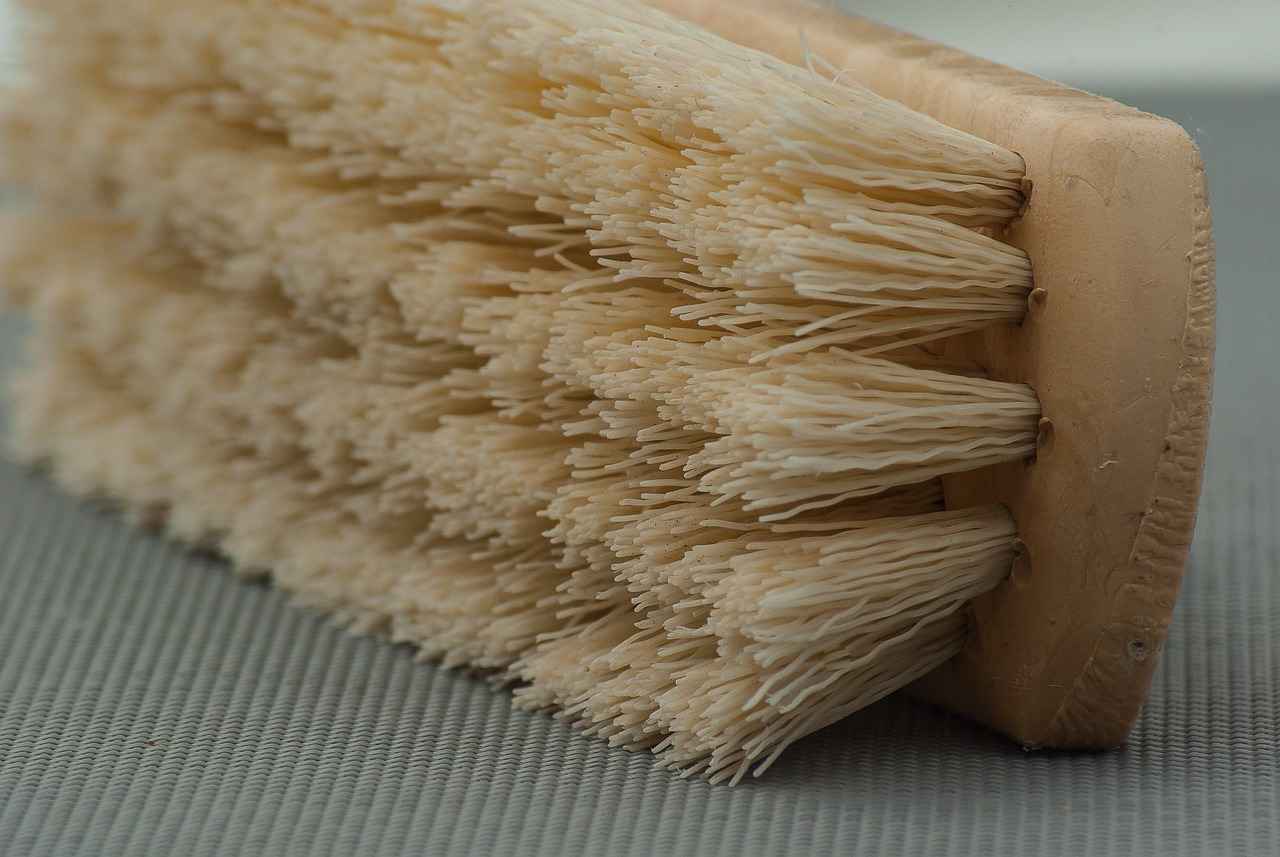
When to Seek Professional Help?
When it comes to maintaining leather items, water stains can pose a significant challenge. While many homeowners attempt to tackle these stains through DIY methods, there are instances when professional help is not just advisable but necessary. Understanding when to seek the expertise of a professional leather cleaner can save you from further damage and restore your leather items to their former glory.
Many DIY methods exist for removing water stains from leather, but they often come with limitations. Homemade solutions such as vinegar or olive oil can be effective for minor stains, but they may not be suitable for more severe cases. If you find that your efforts yield little to no improvement, it’s time to consider professional assistance.
It is essential to recognize the signs that indicate your leather item may require professional intervention. Look for:
- Cracks or deep creases: If the leather shows signs of cracking, it indicates that the material has lost its natural oils.
- Persistent discoloration: Stains that do not respond to cleaning attempts may be deeply embedded in the leather fibers.
- Texture changes: If the leather feels rough or has lost its suppleness, it may need specialized treatment.
Once you’ve determined that professional help is necessary, the next step is to find a reputable cleaner. Here are some tips to guide you:
- Research credentials: Look for cleaners who specialize in leather care and have positive reviews.
- Ask about methods: Inquire about the cleaning products and techniques they use to ensure they are safe for your leather type.
- Request a consultation: A professional should be willing to assess your leather item and provide an estimate before proceeding.
Understanding the cleaning process can help ease any concerns you may have. Typically, a professional cleaner will:
- Assess the damage: They will evaluate the extent of the water stains and any other damage.
- Choose appropriate products: Professionals use specialized cleaners designed for different types of leather.
- Apply conditioning treatments: After cleaning, they may apply conditioners to restore moisture and flexibility.
After your leather item has been professionally cleaned, it’s essential to maintain it properly to prevent future stains. Consider the following:
- Regular conditioning: Apply a leather conditioner every few months to keep it supple.
- Use protectants: Consider using a leather protectant to create a barrier against moisture.
- Store appropriately: Keep leather items in a cool, dry place, away from direct sunlight.
In conclusion, while DIY methods can be helpful for minor water stains, recognizing when to seek professional help is crucial for preserving the integrity of your leather items. By understanding the signs of severe damage and knowing how to choose a qualified cleaner, you can ensure your leather remains in excellent condition for years to come.
Identifying Severe Damage
When it comes to maintaining leather items, is a crucial skill. Leather is a durable material, but it can suffer from various forms of wear and tear. Recognizing the signs of severe damage early can save you from costly repairs or irreversible deterioration.
One of the first indicators of severe damage is the appearance of cracks. These can manifest as fine lines or deep fissures on the surface of the leather. Cracks often develop due to a lack of moisture or improper care. If you notice cracks, it is essential to assess the extent of the damage. Minor cracks may be treatable with conditioning products, while deeper fissures may require professional attention.
Another significant sign of severe damage is deep discoloration. This can occur as a result of water stains, exposure to sunlight, or chemical reactions with cleaning products. Discoloration not only affects the aesthetic appeal of leather but can also indicate that the material’s integrity is compromised. If the color change is extensive or uneven, seeking professional help is advisable.
Additionally, you should be on the lookout for flaking or peeling leather. This type of damage often indicates that the protective finish on the leather has worn away, exposing the underlying material to environmental factors. Flaking can lead to further deterioration if not addressed promptly. In such cases, it is best to consult with a professional who specializes in leather restoration.
To assist you in identifying severe damage, here are some common signs to watch for:
- Cracks – Look for both fine lines and deep fissures.
- Discoloration – Check for uneven color changes or dark spots.
- Flaking or Peeling – Notice if the surface is losing its texture.
- Stiffness – Feel for any loss of flexibility in the leather.
- Odor – Be aware of any unpleasant smells that may indicate mold or mildew.
If you observe any of these signs, it may be time to consult a professional leather cleaner. Professionals have the expertise and tools necessary to assess the damage accurately and recommend appropriate restoration techniques. They can also provide guidance on how to maintain your leather items to prevent future issues.
In summary, recognizing the signs of severe damage in leather is essential for maintaining its beauty and longevity. Regular inspections can help you catch problems early, allowing for timely intervention. If you encounter significant issues such as cracks or deep discoloration, don’t hesitate to seek professional help to restore your leather to its former glory.
Choosing a Professional Cleaner
Choosing the right professional cleaner for your leather items is essential to ensure they receive the appropriate care and treatment. Leather is a delicate material that requires specific cleaning methods to maintain its integrity and appearance. This section will provide you with valuable tips on finding reputable cleaning services and what to expect during the cleaning process.
Leather can be easily damaged if not cleaned properly. Professional cleaners have the knowledge and experience to handle various types of leather and stains. They use specialized products and techniques that are safe for your leather items, ensuring that they are cleaned without causing harm.
- Experience and Expertise: Look for cleaners who specialize in leather care and have a proven track record. Check their credentials and customer reviews to gauge their reliability.
- Certifications: Reputable cleaners often have certifications from recognized organizations. This indicates that they are trained in the best practices for leather maintenance.
- Insurance: Ensure that the cleaning service is insured. This protects you in case of any damage that may occur during the cleaning process.
- Product Knowledge: A good cleaner should be knowledgeable about different leather types and the appropriate cleaning methods and products for each.
Finding the right professional cleaner requires some research. Here are some effective strategies:
- Online Reviews: Check platforms like Google, Yelp, or specialized forums for customer feedback. Look for services with consistently high ratings.
- Recommendations: Ask friends, family, or colleagues for recommendations. Personal experiences can guide you to trustworthy cleaners.
- Consult Local Leather Stores: Many leather retailers have partnerships with professional cleaners and can provide referrals.
When you take your leather items to a professional cleaner, here’s what you can expect:
- Initial Assessment: The cleaner will assess the condition of your leather and identify any stains or damage that need special attention.
- Cleaning Techniques: Depending on the type of leather and the nature of the stains, the cleaner will use appropriate methods, such as steam cleaning, spot cleaning, or conditioning.
- Timeframe: The cleaning process can vary in duration. Your cleaner should provide you with an estimate of how long the cleaning will take.
- Post-Cleaning Care: After cleaning, the professional may offer advice on how to maintain your leather to prevent future damage.
Once your leather has been professionally cleaned, it’s important to maintain its condition. Here are some tips:
- Regular Conditioning: Apply a leather conditioner every few months to keep the material supple and prevent cracking.
- Avoid Direct Sunlight: Keep your leather items away from direct sunlight, as this can cause fading and drying.
- Store Properly: When not in use, store leather items in a cool, dry place, preferably in breathable dust bags.
By following these guidelines, you can ensure that your leather items are treated with the utmost care, prolonging their lifespan and maintaining their beauty.
Frequently Asked Questions
- What should I do if my leather item gets water stains?
If your leather item gets water stains, don’t panic! Start by gently blotting the stain with a soft, dry cloth to absorb excess moisture. Then, consider using a home remedy like a mixture of vinegar and water or a commercial leather cleaner designed for stains.
- Can I use regular household cleaners on leather?
It’s best to avoid regular household cleaners on leather, as they can contain harsh chemicals that may damage the material. Stick to products specifically formulated for leather to ensure safe and effective cleaning.
- How can I prevent water stains on my leather items?
Prevention is key! To keep your leather items looking pristine, apply a quality leather protectant and store them in a cool, dry place. Avoid exposing them to moisture and humidity whenever possible.
- When should I seek professional help for my leather?
If your leather shows signs of severe damage, like deep cracks or discoloration, it might be time to call in the pros. Professional cleaners have the expertise and tools to restore your leather’s beauty without causing further damage.

